The next morning a bus with a score of tourists stopped by Mike's Hotel to collect me, heading for HaLong Bay. The fellows running the hotel, months before my arrival, had made the arrangements for me. A UNESCO World Heritage Site, HaLong Bay has an area of around 1,500 km2, including nearly 2,000 islets. The picturesque karst topography took 20 million years of dissolution by a wet tropical climate. It was pictures of this geology which attracted me to visit Vietnam.
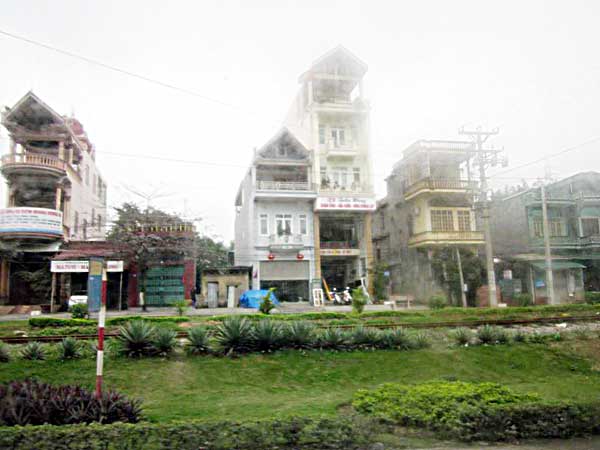 |
As the bus drove the two to three hours from HaNoi towards Haiphong at the north end of HaLong
Bay, it became apparent that the strange narrow construction of Mike's Hotel was typical of nearly all Vietnamese buildings. When I inquired, I was told buildings are taxed by their frontage along the street. The tax is apparently quantized in roughly 4 meter units. So buildings are constructed 4 m, 8 m, or 12 m widths. The buildings can be as deep as the property permits. The height depends on the wealth of the family.
|
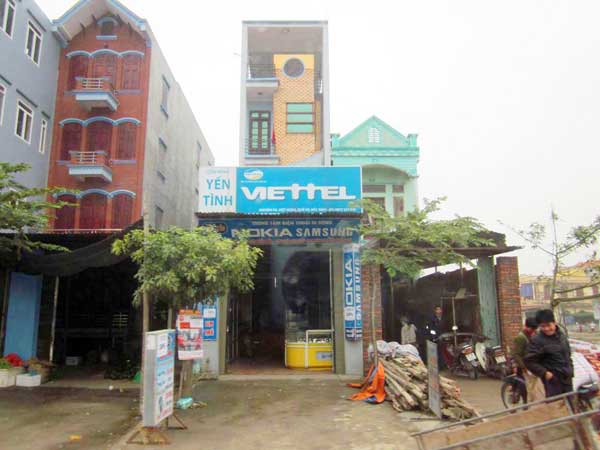 |
The first floor of every home is devoted to a family business. I was surprised that in a country with a communist government, it appears the people are universally capitalists!
Also notice how house fronts are so colorful and unique, much more than I was accustom to in the United States. Individualism flourishes!
A little over half way, the bus stops at a tourist store selling snacks and trinkets. In exchange the bus gets a free car wash out back.
|
 |
The countryside was filled with well cultivated fields growing rice.
Note the concrete lined, brick irrigation ditch. The power poles typically are also concrete.
|
 |
Not all fields grow rice. Here are several other crops.
|
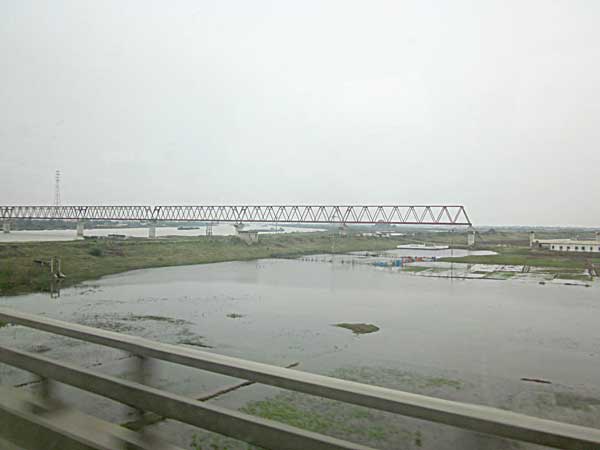 |
There is visible much family and community business and construction. Note the amount of cargo traffic along the river as well and the new rail line and bridge being constructed.
|
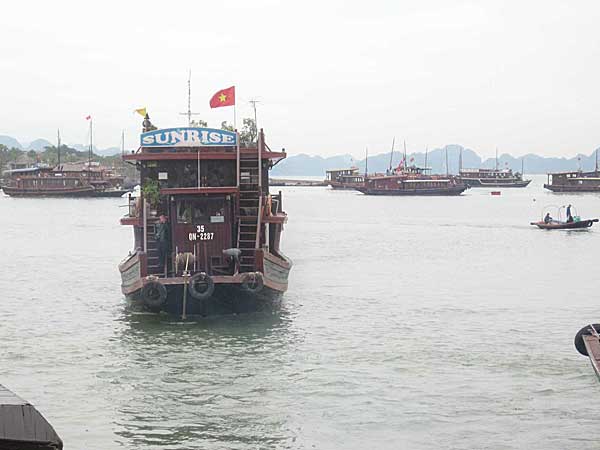 |
The junk Sunrise approaches the landing to pick up half our bus load of tourists, the eleven of us planning to spend the night afloat. We are transferred to another tour guide while day trippers are taken to a junk without sleeping quarters.
The large number of rugged islands are visible on the horizon.
|
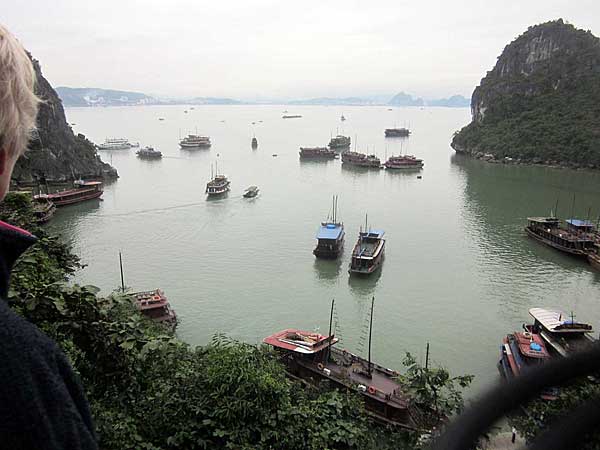 |
We cruised across the bay, leaving the city of Haiphong with its new suspension bridge and cruise ship and freight docks in the background, joining other junks in an island cove. We left the Sunrise, hiking up the hillside to the entry of one of several large limestone caves.
|
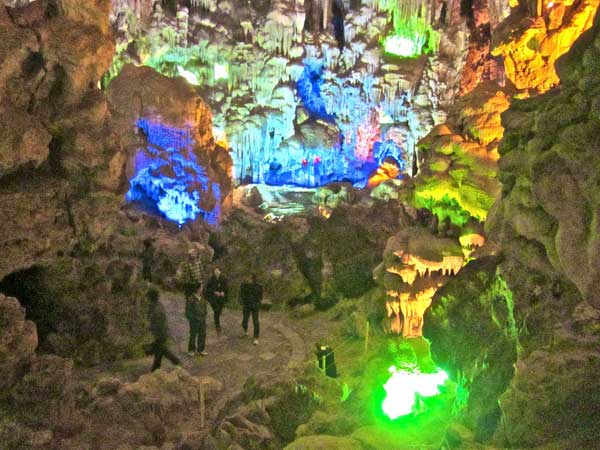 |
We walked for an hour or more through two large, elaborate cave systems, both illuminated with many colored lights.
|
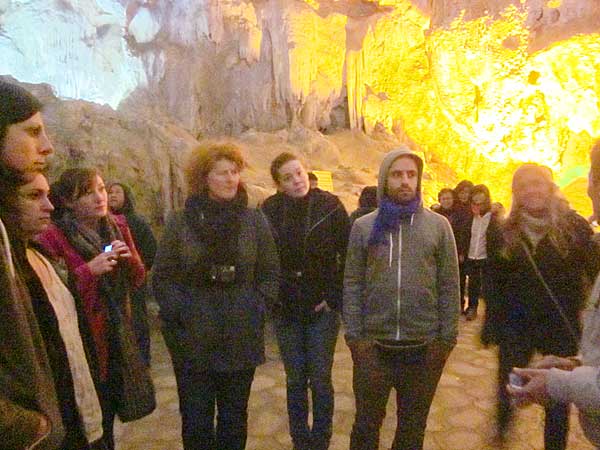 |
I was surprised to find that most of my fellow travelers were roughly college aged Europeans, out to experience the world in pairs and often individually, finding travelling companions along the way as convenient. I found them very tolerant and accepting of an old guy like me. There was a conspicuous absence of other Americans of any age. Despite coming from countries with a wide variety of native languages, we all communicated readily in English.
|
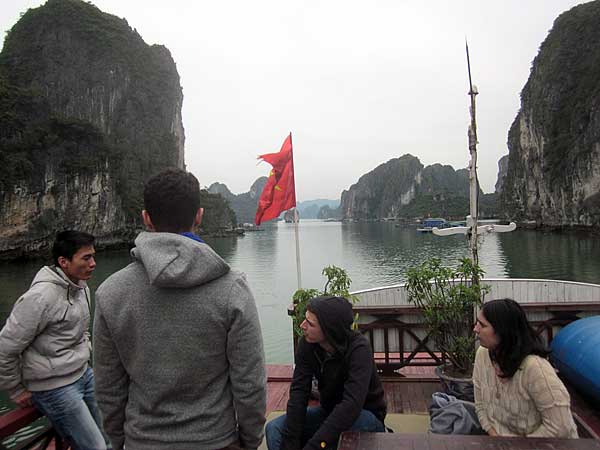 |
Again on the Sunrise, we cruised amongst the uninhabitable islands, often questioning and listening to our tour guide (at left). We spent much of our time cruising on the open top deck where the weather was comfortable and we had a 360 view around us.
|
 |
We came upon the first of several floating villages.
|
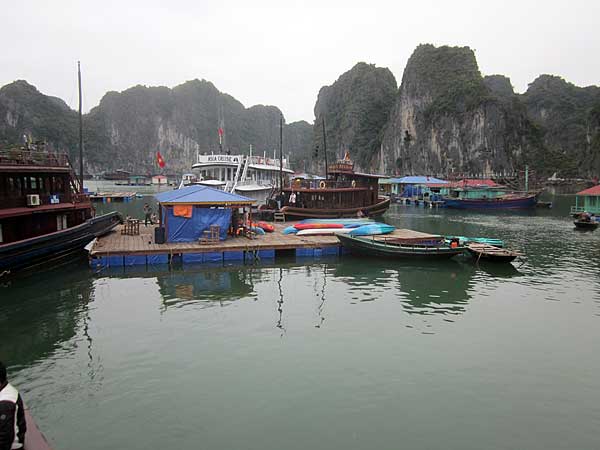 |
We again left the Sunrise, donned life jackets and boarded two-man kayaks.
|
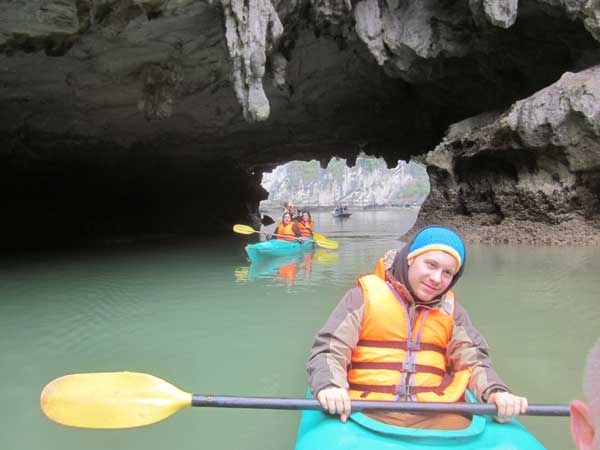 |
|
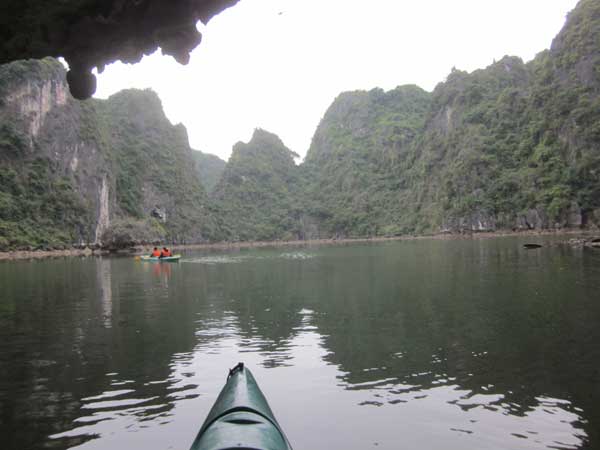 |
|
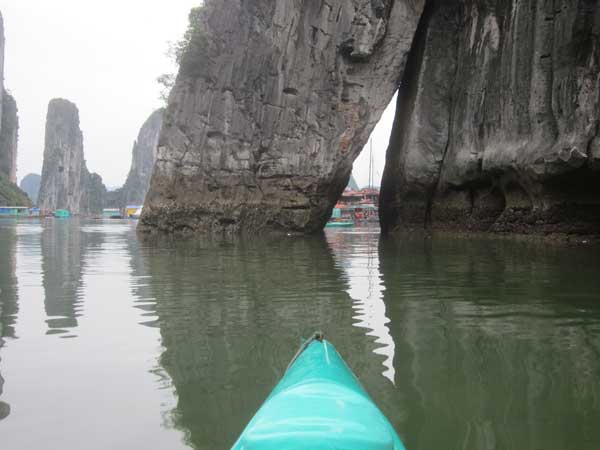 |
|
 |
|
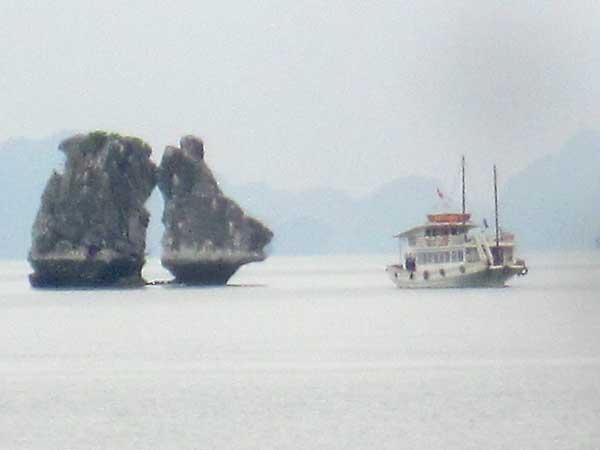 |
Ga Choi ( "fighting cock" ) Islet
|
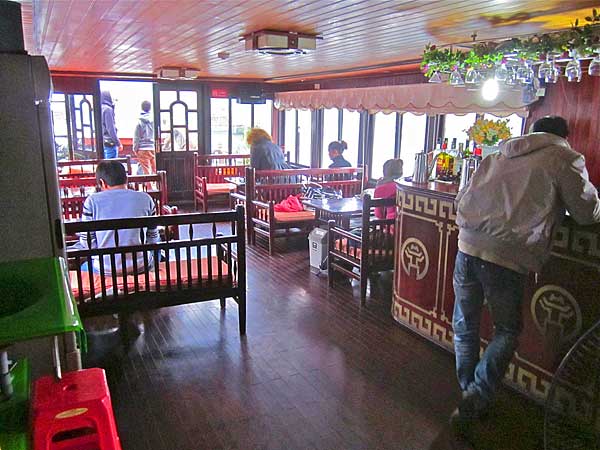 |
We ate, talked and after dark played card games in the Sunrise's lounge. When the anchor was set for the night, we tied up along side another junk. Their crew joined ours to celebrate a birthday. Some of us climbed across to the other junk to meet their travelers and end the night with more card games and stories.
|

















